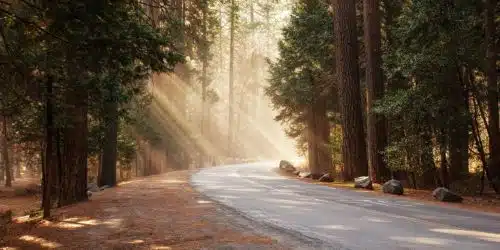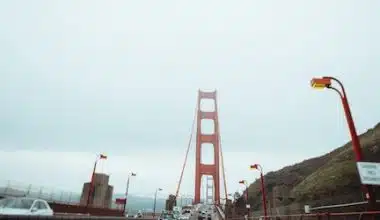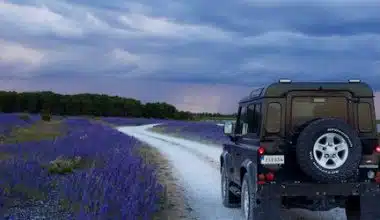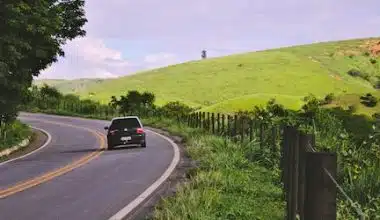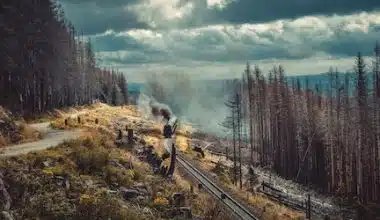A road trip is an exciting experience that allows you to escape the limits of daily life and explore the world around you. It’s a trip full of possibilities, with each turn of the wheel bringing fresh adventures and discoveries. What better way to record and preserve those memories than through the art of road trip photography?
The combination of artistic expression and narrative in road trip photography is intriguing. It allows you to capture not only the landscapes and landmarks you see, but also the feelings, connections, and brief moments that distinguish each voyage. Whether you’re traveling through enormous deserts, winding mountain roads, or tiny seaside towns, road trip photography allows you to capture the soul of your journey in magnificent photos.
In this thorough guide, we will delve into the world of road trip photography and unearth the strategies, insights, and creative approaches that can assist you in elevating your skills and creating visually stunning photographs that tell a fascinating story. We will take you on a visual voyage that will unleash your road trip photography potential, from critical gear and route planning to mastering composition, lighting, and capturing candid moments.
So buckle up, grab your camera, and prepare to embark on a journey that will not only change your outlook on road trips but also your perspective on photography. Let’s look into the beauty of road trip photography and learn how to capture memories on the go.
Road Trip Photography
Road trips provide an exceptional opportunity to broaden one’s horizons, embrace adventure, and make lifelong memories. The joy of travel combined with the craft of photography offers up a universe of possibilities. Road trip photography allows you to save moments that would otherwise be lost by capturing the essence of your experience. Every frame tells a tale, from large landscapes to personal relationships. Let’s go on this visual adventure together and learn how to make the most of road trip photography.
Essential Gear for the Road
When it comes to road trip photography, having the appropriate equipment may make or break the quality of your images. Professional cameras and lenses are desirable, but they are not the only options available. You can take gorgeous images even with a high-quality smartphone. If you want to take your road trip photography to the next level, a DSLR or mirrorless camera will provide you with more control and versatility. Here are some essential road trip gear items to consider:
#1. Camera
Choose a camera that meets your requirements and fits your budget. A DSLR or mirrorless camera will give you advanced features and interchangeable lenses, allowing you to be more creative. Before you hit the road, make sure your camera is in good working order and that you are familiar with its settings.
#2. Lenses
Invest in lenses that can cover a wide range of focal lengths. A wide-angle lens is ideal for photographing large landscapes, whereas a telephoto lens allows you to focus on distant subjects. Consider using a prime lens with a large aperture in low-light situations to achieve a shallow depth of field.
#3. Tripod
A sturdy tripod is required for capturing sharp images, particularly in low-light situations or when using long exposures. Look for a lightweight, compact tripod that is simple to transport and set up. It will also come in handy for self-portraits or group shots while driving.
#4. Additional Batteries and Memory Cards
Carry extra batteries and memory cards to avoid running out of power or storage space. Road trips frequently involve extended periods away from charging stations, so having spare batteries ensures that you never miss a shot. Similarly, having plenty of memory cards allows you to keep clicking without worrying about running out of space.
#5. Lens Cleaning Kit
Dust, dirt, and smudges can easily get onto your camera lens and degrade image quality. To keep your lenses clean and free of debris, carry a lens cleaning kit that includes a microfiber cloth, lens cleaning solution, and a blower brush.
#6. Backpack or Camera Bag
Invest in a long-lasting and comfortable camera bag or backpack that can safely store and protect your equipment while you’re on the go. Choose a bag with compartments and padding to keep your gear organized and secure on bumpy rides.
#7. Remote Shutter Release
A remote shutter release, also known as a cable release, allows you to trigger your camera without touching it. This is especially useful for long exposures or when you want to capture sharper images while minimizing camera shake.
#8. Filters
Consider including a variety of filters in your toolkit. A polarizing filter reduces reflections and improves color saturation, whereas neutral density filters allow you to control the amount of light entering the camera, allowing for creative long exposures even in bright light.
#9. Smartphone and Photography Apps
Even if you have a dedicated camera, don’t overlook your smartphone’s capabilities. Smartphone cameras are now quite impressive, and there are numerous photography apps available that provide advanced features for editing and enhancing your images while on the go.
#10. First Aid Kit
While not directly related to photography, a basic first aid kit is required for any road trip. It ensures your safety and well-being during unexpected situations and allows you to focus on your photography with peace of mind.
Remember, the gear you choose ultimately depends on your preferences, budget, and the type of photography you intend to pursue during your road trip. It’s important to strike a balance between having the necessary equipment and avoiding overpacking, as you’ll also need to consider space constraints in your vehicle. Choose wisely and prioritize the gear that will best support your creative vision on the road.
By having the right gear on hand, you’ll be well-prepared to capture the breathtaking landscapes, candid moments, and unique encounters that await you during your road trip. In the next section, we’ll explore how to plan your road trip photography route and maximize your photographic opportunities along the way.
Planning Your Road Trip Photography Route
Planning your road trip photography route is an exciting step that allows you to identify the stunning locations and hidden gems you want to capture along the way. While spontaneity can lead to unexpected adventures, having a rough itinerary in mind ensures that you make the most of your time and optimize your photographic opportunities. Here are some tips to help you plan your road trip photography route:
#1. Research Destinations
Start by researching the destinations along your route. Look for iconic landmarks, breathtaking landscapes, charming towns, and lesser-known spots that pique your interest. Online travel guides, photography forums, and social media platforms can be excellent sources of inspiration and information.
#2. Consider Lighting and Timing
Lighting plays a crucial role in photography, so consider the best time of day to capture your desired locations. Golden hours, which are the hours after sunrise and before sunset, often provide soft, warm light that enhances the beauty of landscapes. Plan your itinerary to be at key locations during these times.
#3. Create a Flexible Schedule
While it’s important to have a schedule, allow for flexibility in your itinerary. Weather conditions, unexpected detours, or serendipitous discoveries may alter your plans. Embrace these spontaneous moments and be open to adjusting your route accordingly.
#4. Plan for Different Subjects
Variety is key in road trip photography. Incorporate a mix of landscapes, urban scenes, wildlife, and cultural experiences into your itinerary. This diversity will add depth and intrigue to your photo collection and help you tell a more comprehensive account of your road trip.
#5. Check Local Regulations and Permits
Some areas may require permissions or have limits on photography. Before you visit any protected sites or private lands, check for the necessary licenses or rules. This ensures you avoid any legal issues and also helps in respecting the environment and local communities.
#6. Take Note of Travel Distances
Consider the distances between your planned locations and add in travel time. Long journeys can be tiring, so make sure you have adequate time to rest and explore each destination without rushing. It’s best to prioritize quality over quantity when it comes to photography.
#7. Research Accommodation Options
Look for lodging alternatives that are conveniently positioned near your shooting destinations. This enables easier access under optimal lighting conditions and minimizes travel time. Consider vacationing in unique accommodations like cabins or lodges that offer scenic surroundings.
#8. Seek Local Knowledge
While online research is valuable, don’t underestimate the power of local knowledge. Interact with locals, ask for advice, and be open to fortuitous encounters that may lead you to undiscovered photography gems. Locals can provide valuable insights and help you discover off-the-beaten-path locations.
#9. Embrace Serendipity
Despite having a well-planned route, be open to serendipitous moments and unexpected discoveries. Some of the most memorable and unique photographic opportunities arise from chance encounters and spontaneous detours. Allow yourself the freedom to deviate from the plan when something catches your eye.
#10. Safety First
Always prioritize your safety and that of your equipment. Ensure you have a reliable navigation system or GPS, carry a spare tire and necessary tools in case of emergencies, and let someone know about your itinerary and estimated arrival times.
By planning your road trip photography route, you set the stage for capturing breathtaking images and creating a cohesive visual narrative of your journey. In the next section, we’ll delve into the art of composition and how to create visually compelling photographs during your road trip.
Composition: Framing the Perfect Shot
Composition lies at the heart of captivating photography. It’s the art of arranging elements within the frame to create visually pleasing and impactful images. When shooting on the road, keep in mind the rule of thirds, leading lines, and the balance between foreground and background elements. Experiment with different perspectives, angles, and focal lengths to add depth and visual interest to your photographs. Remember, composition is subjective, and breaking the rules can lead to unique and compelling results.
Mastering Light: The Key to Beautiful Road Trip Photos
Understanding and utilizing light is essential in photography. An ordinary scene can be transformed into something extraordinary with the right lighting. Pay attention to the quality, direction, and intensity of light as you embark on your road trip. Golden hours, the periods shortly after sunrise and before sunset, offer soft, warm light that enhances landscapes and portraits. To add artistic flair to your images, use dramatic lighting conditions such as backlighting or silhouettes.
Capturing Candid Moments: Storytelling in Road Trip Photography
Road trips are full of unexpected moments and genuine emotions. Including candid photos in your photography adds a storytelling element, allowing viewers to connect with the story of your journey. Be alert and ready to seize these fleeting opportunities. Instead of being intrusive, blend in with your surroundings and let the scenes unfold naturally. Photographs of fellow travelers, locals, or even your reactions can elicit nostalgia and capture the essence of the road trip experience.
Embracing the Elements: Weather and Road Trip Photography
The mood and atmosphere of your photographs can be greatly influenced by the weather. Instead of being deterred by adverse weather, embrace it as an opportunity to get unusual and dramatic photos. Rain showers can generate sparkling reflections, fog lends a feeling of mystery, and stormy skies bring a dramatic vitality to your images. Experiment with long exposures to capture the movement of rain or waves, or use weather aspects as foreground or background elements to create drama in your compositions.
Finding Inspiration: Engaging with the Local Culture
A road trip isn’t just about the destinations; it’s about immersing yourself in the local culture and connecting with the people you encounter. Engaging with locals can bring useful insights, unusual views, and fantastic photographic opportunities. Strike up discussions, ask for recommendations, and be open to new experiences. Document the traditions, festivals, food, and daily life of the places you visit, capturing the soul of each destination via your lens.
Enhancing Your Road Trip Photos
Post-processing is a vital step in bringing out the full potential of your road trip images. Utilize picture editing software to fine-tune your images, altering exposure, contrast, colors, and sharpening as appropriate. Maintain a balance between improving the visual appeal of your images and maintaining the realism of the scenes you shoot. Experiment with numerous editing approaches to find the one that best suits your artistic vision. Remember, editing should improve your images, not overpower them. Aim for a natural and timeless appearance that portrays the essence of your road trip experiences.
Tips for Road Trip Photographers
While road trip photography is exciting and rewarding, it’s essential to prioritize safety throughout your journey. Always ensure you’re familiar with local laws and regulations regarding photography in each destination. Be mindful of your surroundings, particularly when shooting in unfamiliar areas or crowded locations. Avoid taking unnecessary risks and prioritize your well-being. Stay hydrated, bring appropriate clothing and gear for varying weather conditions, and be prepared for unexpected situations.
Once you’ve captured stunning road trip photographs, don’t let them gather digital dust on your computer. Share your visual journey with the world. Create a dedicated online portfolio, showcase your best images on social media platforms, or even consider submitting your work to photography contests or exhibitions. Engage with fellow photographers, join photography communities, and seek constructive feedback to further refine your skills and expand your network.
Road Trip Photography Etiquette: Respecting People and Places
As road trip photographers, it’s essential to practice ethical and responsible photography. Respect the privacy and rights of individuals you encounter during your journey. Always seek permission when photographing people, particularly in cultural or sensitive contexts. Respect the natural environment and local customs, adhering to designated trails and leaving no trace. By practicing responsible photography, you not only uphold ethical standards but also contribute to the preservation and respect of the places you visit.
Conclusion
Road trip photography is a captivating blend of adventure, creativity, and storytelling. It allows you to capture the essence of your journey, preserving memories and emotions in a visual medium. By mastering essential techniques, embracing spontaneity, and immersing yourself in the local culture, you can elevate your road trip photography to new heights. So, pack your camera, hit the open road, and embark on a visual adventure that will leave you with a collection of remarkable images and unforgettable experiences.
- Top 10 Road Trips for Solo Explorers: Embrace the Journey
- BEST ROAD TRIPS FROM CHICAGO
- Best Road Trips for Foodies: Savor Culinary Delights on Wheels
- Best Time to Visit Yosemite 2023: Summer, Spring, Winter & Autumn Tips
- BEST HAVE A SAFE TRIP MESSAGES AND WISHES: The Ultimate List
